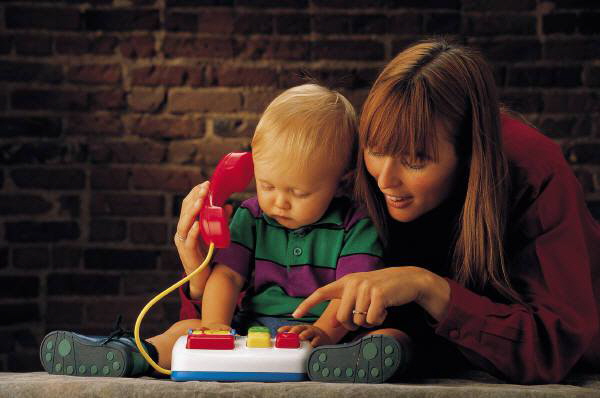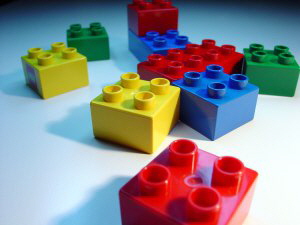|

How to encourage your child
ugust 25, 2014࿒? Parent's Roleེ? Leave a Comment
Parent’s Role in Imaginative Play
Encourage
As a parent you want to encourage your child in his play and learning activities.
1.Consider age, environment and your child’s learning style as you offer various opportunities. Can your child use crayons? Dress themselves? Walk? Where will your child play? How will you organize the space? What skills is your child working on? Walking? Talking? Sorting? Role playing? Physical coordination and sports?
2.Watching television is a passive activity and typically does not engage your child’s imagination. (Note: closely monitor television viewing-watch with them!) Consider limiting viewing time.
Currently, one of the most concerning aspects of raising children is the amount of time they spend in front of screens, whether it is TV, DVD, video, computer, playstation, etc. When children focus their attention onto a screen, it is a very passive form of learning or entertainment. Instead of using their own imaginations to learn about the world and create something, children are passive recipients of visual and auditory stimulation that may or may not require some response using fine motor skills. However, this is a very artificial way of learning about the world and does not engage children in a kinesthetic manner using their entire bodies.
Kathy Eugster, MA, RCC, RPT
http://kathyeugster.com/articles/article007.htm
3. Read, read, read to your children! Everyday. All sorts of books: classic storybooks, picture books, word and search books) Nothing stimulates the imagination and opens up possibilities as much as exploring the world through reading. Stay one or two steps ahead of their ability to read which can keep them interested and challenged. It was just as much fun to read our old favorites with our children as it was to find new family favorites. Talk about the stories: what happened? would you do something differently? what was your favorite part of the story? Encourage them to collect books for their very own library. Get a library card for them as soon as possible; we never had as much fun as when we went to the library and browsed books for hours, sitting down to read in the aisles. It was an afternoon adventure!
Provide
1.Time
Play is your child’s work and just as you dedicate time for work, your child needs to have time dedicated for play. Although outside activities and interests are an important part of learning and preparation for the adult world, it is way too easy to ‘over schedule’ your child’s time. Our grown daughter has thanked us time and again for letting her ‘just be a kid’. The opportunities for exploration and learning multiply if the time is left unstructured and to your child’s imagination.
2.Space
We were fortunate to have a family room that allowed the children to have a dedicated space with enough room for playing and moving and storing their stuff. We also cultivated a strong tolerance for ‘messy play and clutter’ (sometimes the newly created castle had to stay in place for more adventures the next day!). There are lots of ways to organize play materials (more on that in another discussion) that make it easier for your children to help clean up at the end of each day.
3.Materials
A good story needs to have a setting and some props to help it along; these do not need to be fancy or expensive, but some basic supplies and toys are required. Also consider the space you have to store these goodies before you rush out to make your purchases!
a. Ready made toys that are safe for your childs age group go along way to creating their make believe worlds: play food, special hats, grocery carts, music instruments, etc.
b.Real life toys like pots, pans, kitchen spoons, feather dusters, pads and pens pave the way for pretend play.
c.Building blocks of some sort that let your child create their own props and worlds; our kids made everything from doll houses to guns out of their lego and duplo!
d.Materials for creating magic! This can be anything from paint to construction paper, ribbons, glue sticks, scissors and empty cardboard boxes (the bigger the better!). Safety is the limiting factor and will change as your child grows older. See the list of ‘must haves’ for crafting, construction and dressups!
4.Supervision
Play is serious business and safety was always our first priority. In addition to providing a safe physical space for your children to play, it’s critical that you are available to intervene if there is any name calling, physical aggression, or dangerous play. You may be needed to de-escalate disagreements and provide safe boundaries. You will also find opportunities to help your child learn problem solving skills as well as get glimpses into what their current challenges and interests are.
5.Games with rules
Board games and other physical activities with rules have a place especially in your older child’s life to help them learn about competition, structure and winning versus losing. Join in! Make it special family time.
6.Play dates
Playing with others is a great arena for learning social skills: taking turns, sharing, talking nicely, negotiating, working cooperatively and becoming empathetic. As your child grows, make an effort to invite other children into your home and welcome opportunities for your child to play with friends.
Participate
Our children loved for us to join their play! From being the sick patient to ‘tasting’ the play doh pies we made wonderful fun silly memories together! We learned a few things about playing alongside our children and offer these tips to make your time together happy:
1.Don’t judge, control or evaluate. Play is a time for exploring roles and feelings and events. They may be learning how to express anger or disappointment or how to handle feelings of sadness and loss; give them space to explore these sorts of things without jumping in immediately with all the answers. You can always invite your child to share more at a later time.
2.Focus on the process, not the goal: ‘where is the bus going?’ vs ‘the bus is going to school’ or ‘Tell me more about that drawing’ vs ‘houses have pointed roofs’.
3.Reflect on feelings: ‘the puppy looks sad; what’s going on?’ or ‘the Daddy is happy’
4.Be their playmate. Let them be in charge of the story.
5.Be willing to help with the big stuff like moving chairs or making a tent with blankets.
6.Build on your child’s interests and learning styles. If they like art, try painting instead of coloring. If they like music, offer a different music instrument. Connect what your child is doing to what they’re learning at the time. If they are beginning to count, talk about numbers:’ we have two bears so we need two cookies: one-two’.
7.Model playing, being creative and imaginative. Have hobbies. Ask questions about new things. Discuss ideas and plans. Play what if and word games. Sing songs in the car. Be a lifelong learner.
|